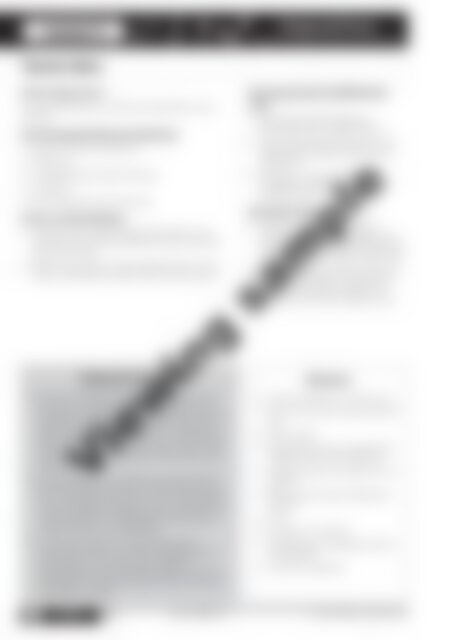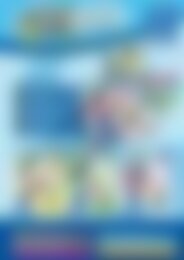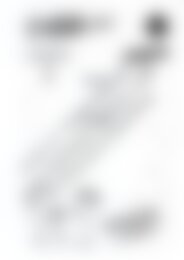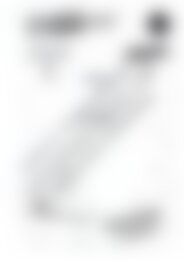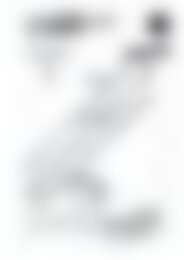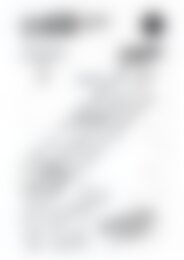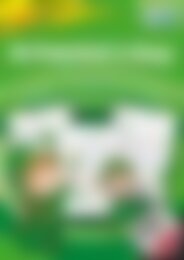PR-6171IRE Science A STEM Approach - 1st Class
You also want an ePaper? Increase the reach of your titles
YUMPU automatically turns print PDFs into web optimized ePapers that Google loves.
Lesson 3<br />
Energy and Forces<br />
NOW YOU SEE IT! NOW YOU HEAR IT!<br />
Teacher Notes<br />
<strong>Science</strong> Inquiry Focus:<br />
How does light help us see? Does light help us see<br />
colours?<br />
Skills Development/Working Scientifically:<br />
• Questioning and predicting<br />
• Observing<br />
• Investigating and experimenting<br />
• Analysing<br />
• Recording and communicating<br />
<strong>Science</strong> Learning Outcomes:<br />
• Pupils act like scientists when they observe, ask<br />
questions and describe different colours and how<br />
they can be seen.<br />
• People use science in their everyday lives such as<br />
when comparing how light sources can be used.<br />
Background Information<br />
• Colour is reflected light. We see colour in one of<br />
two ways: an object can emit light waves in the<br />
frequency of the colour we see; OR the object will<br />
absorb the frequencies of all other colours and<br />
reflect back only the light wave, or combination of<br />
light waves, that produce the colour we see. The<br />
colour of an object depends on the colour of the<br />
light source.<br />
• At this age level, it is sufficient to simply observe<br />
that white light is made up of all the colours and<br />
lets us see objects and their colour. Changing the<br />
colour of light will change the colour we see. This<br />
video also offers more Background Information<br />
.<br />
• The rainbow spinner activity: White light is<br />
composed of all colours of the visible spectrum.<br />
Spinning the circle mixes all the different<br />
wavelengths of coloured light together, creating<br />
white light. The faster the circle moves, the more<br />
white light is visible.<br />
Technology/Engineering/Mathematics<br />
Links:<br />
• Recording results by taking a<br />
photograph with a digital device.<br />
• Using informal measurement to cut/<br />
select appropriately sized pieces of<br />
cellophane.<br />
• Working in a team and following<br />
a sequence of steps to construct a<br />
shoebox viewer.<br />
Assessment Focus:<br />
• Teachers may choose to speak<br />
individually to selected pupils about<br />
how colours are formed while they are<br />
completing their shoebox experiment.<br />
• Teachers may ask pupils to write one<br />
or two sentences (or draw pictures)<br />
to explain that light is made up of<br />
different colours and it helps us see.<br />
Resources<br />
• Copies of page 66 on thick card<br />
• Scissors and colouring pencils/felt<br />
tips<br />
• Poster paper<br />
• Disappearing colour wheel video<br />
<br />
• Sufficient copies of experiment on<br />
page 67<br />
• Red, green and blue cellophane<br />
squares<br />
• Torch<br />
• Shoebox or small box<br />
• Gobstoppers, bubblegum balls or<br />
aniseed balls<br />
• A3 copy of page 68<br />
Viewing sample<br />
64 <strong>Science</strong>:<br />
A <strong>STEM</strong> AP<strong>PR</strong>OACH<br />
<strong>1st</strong><br />
CLASS<br />
978-1-912760-15-2 Prim-Ed Publishing – www.prim-ed.com


